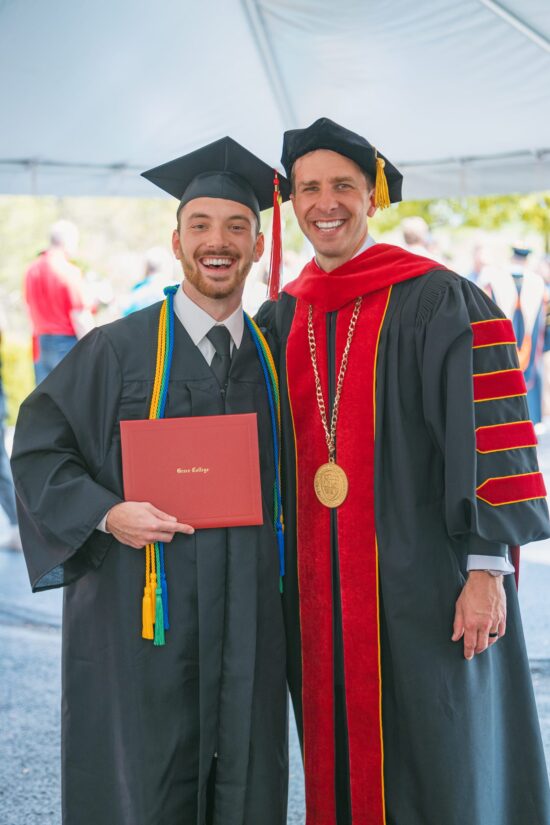A Faculty Blog by Aaron Winey
AI has become a popular topic in the creative and academic worlds. While AI can have many practical uses in art, it can also be misused to plagiarize or undermine the artistic process. So, how does one take advantage of the benefits of AI and art while remaining ethical? As an assistant professor of visual communication and program director of visual arts at Grace College, here are some of the benefits and downfalls I’ve seen with artificial intelligence in design.
AI can create elements of designs.
AI can be a great tool for creating individual elements in art. AI is best and most ethically used when it is used to create individual elements, not whole designs. As you create and design, AI can generate images, text, shapes, and patterns to enhance your designs.
AI can modify elements in art.
Besides creating aspects of designs, AI can help you edit elements of your work. You can expand images in Photoshop, add backgrounds, or fix little things.
However, be mindful of the guidelines your professor or instructor has for using AI and art. Students at Grace College are using AI for projects, but they aren’t allowed to use found imagery unless it’s specified in the project brief. We’re very clear about when they can and can’t use AI. Ultimately, even if you believe that it’s ethically okay to use AI in art in a certain way, you shouldn’t do it if it’s undermining guidelines set up for you in your coursework or your job.
AI can’t replace human relationships.
AI can’t build relationships with clients or help them figure out what they want. AI is not to the point yet that it can interface with a client or ask clients prodding questions to get past cliches and get to the heart of the product. Most of my clients know their goals, but they don’t know exactly how to get there. Oftentimes, clients don’t know exactly what they want, and AI can’t help with that. Embracing tech is important as a tool but not as a replacement. We need to keep the humanist impact because we are deeply relational.
AI shouldn’t be used to steal.
AI can also be used to plagiarize or steal from other artists. We don’t want students creating illustrations to rip off other people’s styles. We want thoughtful use of AI. I encourage students to consider their values and what type of artist they want to be. In the art world, stealing is easy. If you do steal, maybe I’ll catch you, maybe I won’t. But is stealing furthering your educational goals? Do you really want to be the person that’s stealing? In class, we talk about ethics, but ultimately, I can’t control what a person does. Sometimes I can control what students do in the classroom, but after they graduate, I can’t. It’s up to the student to decide what kind of artist he or she wants to become.
AI can’t replicate the value of the creative process.
The creative process is unique in that it includes an element of struggle to use your passions and skills to make something new. Using artificial intelligence in design can undermine the beauty of this method and take away from your experience of art and creativity.
In my classes, we often talk about valuing the creative process and valuing the struggle. Valuing the struggle hopefully gives students the mindset that they don’t want to take; they want to create. There is beauty in creating, and I think that creating is a divine act modeled after a Divine Creator. If we can develop that mindset in the classroom, then I think students are going to be way less likely to do unethical things because they see the value in the process, struggle, pain, and frustration. But also, they see the enjoyment and satisfaction of not only what they did, but what they were able to be a part of.
As an art student at Grace College, you will grow and develop your art abilities. You will also have opportunities to discuss contemporary topics and issues in the industry, such as AI and art.
If you have a passion for creating or an interest in AI and art, check out Grace’s visual and performing arts programs.
Aaron Winey is an assistant professor of visual communication at Grace College, program director of visual arts, and a Grace alumnus. He holds a B.S. from Grace College and an M.F.A. from Vermont College of Fine Arts. Winey owns his own agency, Blue Note, through which he has designed more than 150 logos and more than 50 identity systems.




